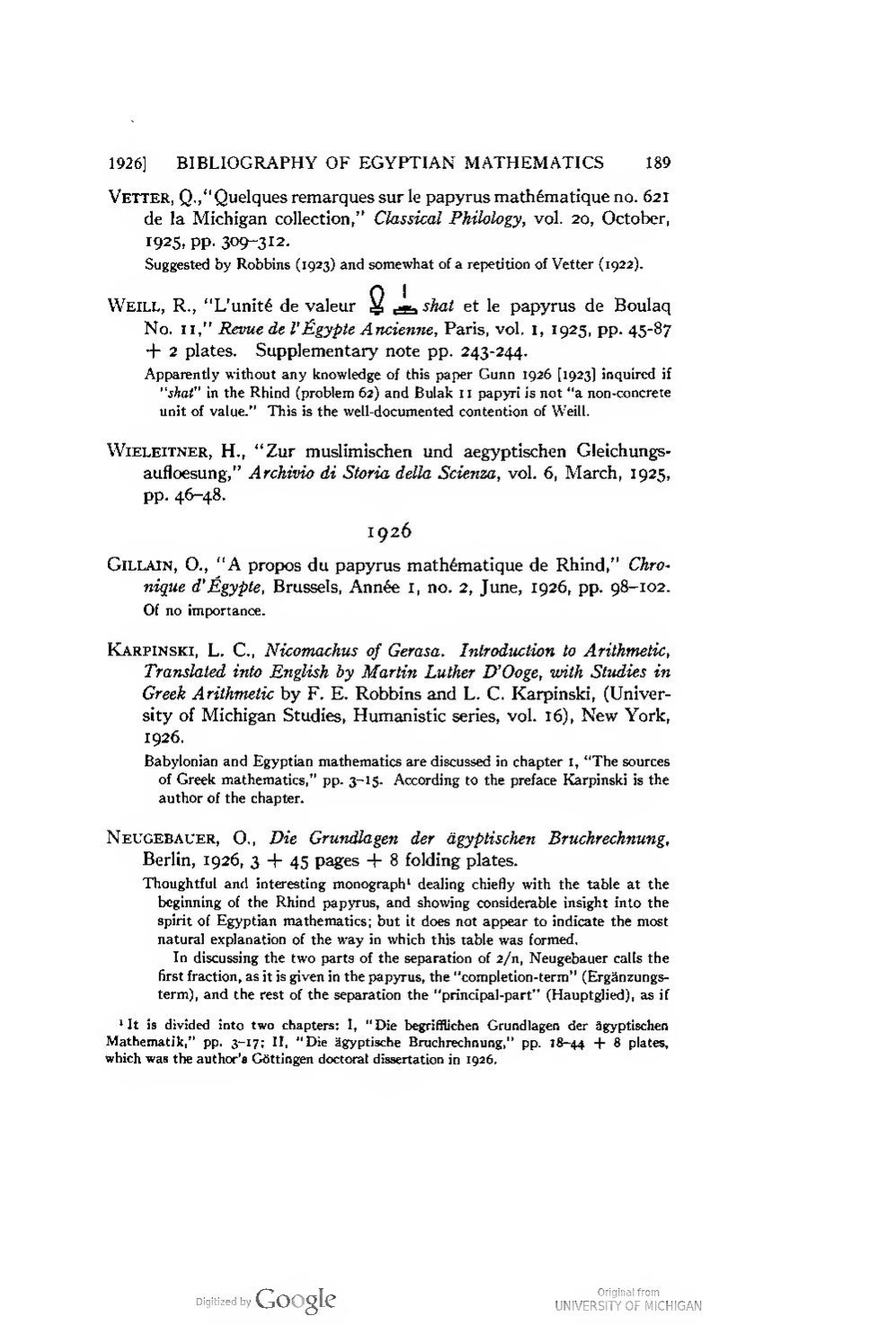Vetter, Q.,"Quelques remarques sur le papyrus mathématique no. 621 de la Michigan collection," Classical Philology, vol. 20, October, 1925. pp. 309-312.
Suggested by Robbins (1923) and somewhat of a repetition of Vetter (1922).
| |
Apparently without any knowledge of this paper Gunn 1926 [1923] inquired if "shat" in the Rhind (problem 62) and Bulak II papyri is not "a non-concrete unit of value." This is the well-documented contention of Weill.
Wienleitner, H., "Zur muslimischen und aegyptischen Gleichungsafloesung," Archivio di Storia della Scienza, vol. 6, March, 1925, pp. 46-48.
1926
Gillian, 0., "A propos du papyrus mathématique de Rhind," Chronique d'Égypte, Brussels, Année I, no. 2, June, 1926, pp. 98-102.
Of no importance.
Karpinski, L. C., Nicomachus of Gerasa. Introduction to Arithmetic, Translated into English by Martin Luther D'Ooge, with Studies in Greek Arithmetic by F. E. Robbins and L. C. Karpinski, (University of Michigan Studies, Humanistic series, vol. 16), New York, 1926.
Babylonian and Egyptian mathematics are discussed in chapter 1, "The sources of Greek mathematics," pp. 3-15. According to the preface Karpinski is the author of the chapter.
Neugebauer, 0., Die Grundlagen der ägyptischen Bruchrechnung. Berlin, 1926, 3 + 45 pages + 8 folding plates.
Thoughtful and interesting monograph[1] dealing chiefly with the table at the beginning of the Rhind papyrus, and showing considerable insight into the spirit of Egyptian mathematics; but it does not appear to indicate the most natural explanation of the way in which this table was formed.
In discussing the two parts of the separation of 2/n, Neugebauer calls the first fraction, as it is given in the papyrus, the “completion-term” (Erganzungsterm), and the rest of the separation the “principal-part" (Hauptglied), as if
- ↑ It is divided into two chapters: I, !Die begrifflichen Grundlagen der ägyptischen Mathematik," pp. 3-17; II, "Die ägyptische Bruchrechnung," pp. 18-44 + 8 plates, which was the author's Göttingen doctoral dissertation in 1926.
